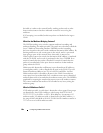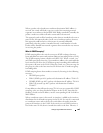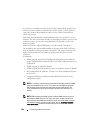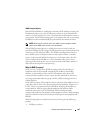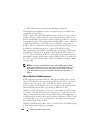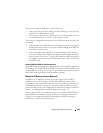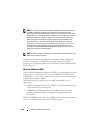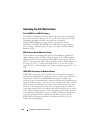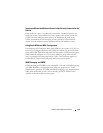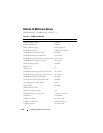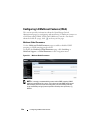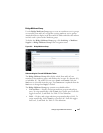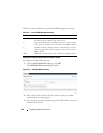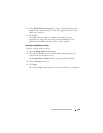
812 Configuring L2 Multicast Features
Snooping Switch Restrictions
Partial IGMPv3 and MLDv2 Support
The IGMPv3 and MLDv2 protocols allow multicast listeners to specify the
list of hosts from which they want to receive the traffic. However the Dell
Networking snooping switch does not track this information.
IGMPv3/MLDv2 Report messages that have the group record type
CHANGE_TO_INCLUDE_MODE with a null source list are treated as
Leave messages. All other report messages are treated as IGMPv2/MLDv1
Report messages.
MAC Address-Based Multicast Group
The L2 multicast forwarding table consists of the Multicast group MAC
address filtering entries. For IPv4 multicast groups, 16 IP multicast group
addresses map to the same multicast MAC address. For example, 224.1.1.1
and 225.1.1.1 map to the MAC address 01:00:5E:01:01:01, and IP addresses in
the range [224-239].3.3.3 map to 01:00:5E:03:03:03. As a result, if a host
requests 225.1.1.1, then it might receive multicast traffic of group 226.1.1.1 as
well.
IGMP/MLD Snooping in a Multicast Router
IGMP/MLD snooping is a Layer 2 feature and is achieved by using the L2
multicast forwarding table. If a multicast source is connected to a VLAN on
which both L3 multicast and IGMP/MLD snooping are enabled, the
multicast source is forwarded to the mrouter ports that have been discovered
when the multicast source is first seen. If a new mrouter is later discovered on
a different port, the multicast source data is not forwarded to the new port.
Likewise, if an existing mrouter times out or stops querying, the multicast
source data continues to be forwarded to the original mrouter port. If a host
in the VLAN subsequently joins or leaves the group, the list of mrouter ports
is not updated for the multicast source, and the forwarding of the multicast
source is not adjusted. The workaround to this limitation is to disable
IGMP/MLD snooping and avoid the use of multi-access VLANs in L3
multicast routing topologies.



